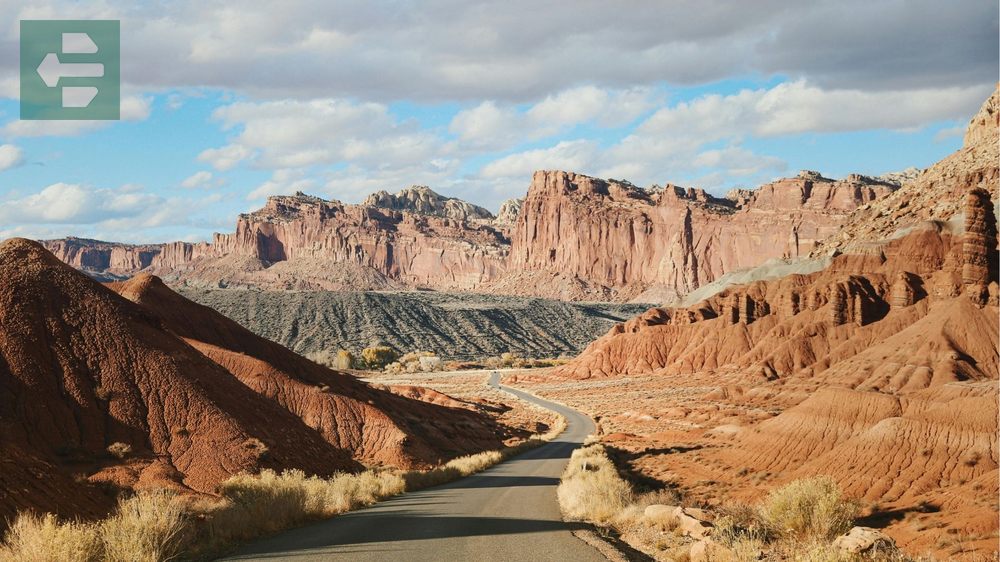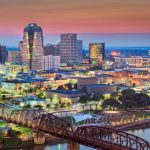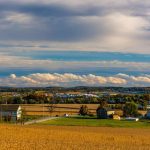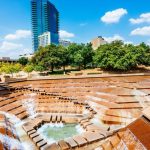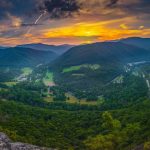The best camping places in Utah deliver unforgettable experiences across the state's diverse landscapes. From Devils Garden Campground's red rock sanctuary in Arches National Park to Sand Hollow State Park's warm-water oasis, Utah offers camping destinations that satisfy every outdoor enthusiast.
Discover Utah's finest camping destinations that combine natural beauty with accessible adventure, creating memories that last a lifetime.
List of Contents
- 1. Devils Garden Campground: Red Rock Sanctuary
- 2. Kolob Campground: Zion's Hidden Valley
- 3. Sand Hollow State Park: Desert Oasis
- 4. Goblin Valley State Park: Martian Landscape
- 5. Bear Lake: The Caribbean of the Rockies
- 6. Palisade State Park: Golf and Wilderness Combined
- 7. Yuba State Park: Warm Water Paradise
- 8. Gunlock State Park: Hidden Red Rock Gem
- 9. Big Cottonwood Canyon: Metropolitan Wilderness
- 10. Albion Basin Campground: Alpine Wonderland
- Your Utah Camping Adventure Awaits
1. Devils Garden Campground: Red Rock Sanctuary
Devils Garden Campground sits eighteen miles into Arches National Park, surrounded by towering sandstone fins and natural arches that glow orange at sunset. This is the park's only campground, making it both exclusive and highly sought after.
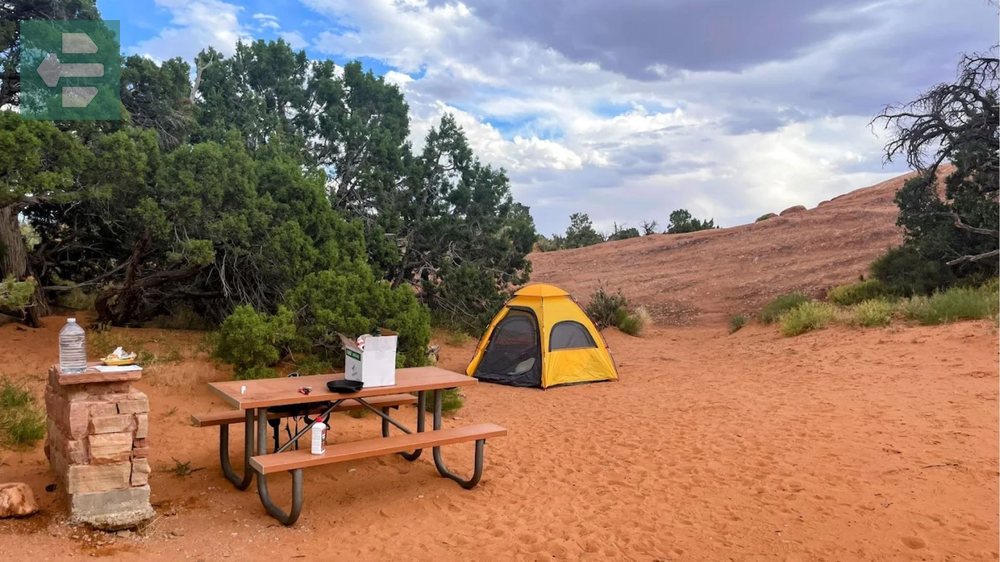
The fifty-one sites nestle between red rock formations at 5,200 feet elevation. Each morning, you wake to views that inspired countless photographers and painters. Skyline Arch stands just a short walk from your tent, accessible via a gentle trail that children can manage easily.
March through October requires advance reservations six months ahead—they disappear within minutes of opening. Winter camping operates first-come, first-served, offering solitude among the arches when snow dusts the red rocks.
Quick Facts:
- Peak Season: March – October
- Access: Highway 191 to Arches entrance, then 18 miles
- Entry Fee: $30 per vehicle (7 days)
- Suggested Stay: 2-3 nights
- Notable Features: Skyline Arch, Delicate Arch trailhead, Fiery Furnace tours
2. Kolob Campground: Zion's Hidden Valley
Kolob Campground occupies a peaceful valley in Zion's northwest corner, far from the crowds that pack the main canyon. The campground sits among towering cottonwoods and maples that create a natural cathedral overhead.
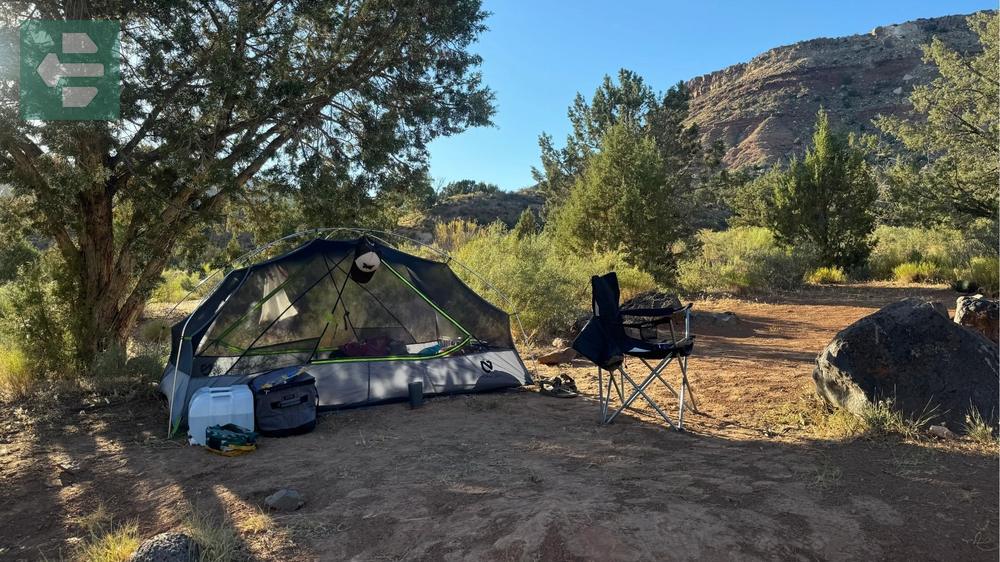
Two loops contain nineteen sites total, each equipped with tables and fire rings. The Kolob Arch Trail begins here—a fourteen-mile round trip to one of the world's largest natural arches. For shorter adventures, the Middle Fork Taylor Creek Trail leads to historic cabins and hanging gardens.
September brings spectacular autumn colors as maples turn brilliant red against Zion's white cliffs. The elevation here runs cooler than the main canyon, making summer camping more comfortable.
Quick Facts:
- Peak Season: May – October
- Access: Highway 9 to Kolob Canyons Road
- Entry Fee: $35 per vehicle (7 days)
- Suggested Stay: 2-4 nights
- Notable Features: Kolob Arch, Taylor Creek Trail, historic cabins
3. Sand Hollow State Park: Desert Oasis
Sand Hollow combines a warm-water reservoir with towering red sand dunes, creating Utah's most diverse camping destination. The park offers four distinct camping areas, from full-hookup sites to primitive beach camping.
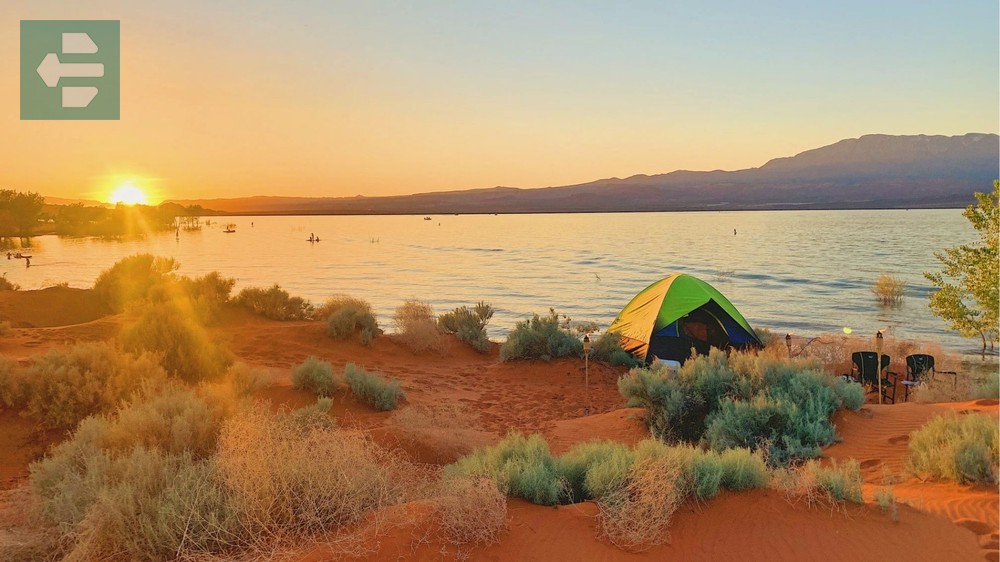
The reservoir maintains temperatures above 65 degrees most of the year, perfect for swimming, wakeboarding, and fishing. Sand Mountain's fifteen thousand acres of sculpted dunes attract off-road enthusiasts from across the West.
Beach camping puts you steps from the water, where sunrise paints the red cliffs in brilliant hues. The contrast between blue water and red rock creates scenery that rivals anything in the Southwest.
Quick Facts:
- Peak Season: April – October
- Access: Exit 10 from I-15, follow signs
- Entry Fee: $20 per vehicle
- Suggested Stay: 3-5 nights
- Notable Features: Sand Mountain OHV area, warm-water reservoir, beach camping
4. Goblin Valley State Park: Martian Landscape
Goblin Valley feels like camping on another planet. Thousands of mushroom-shaped hoodoos create a surreal landscape that children and adults explore for hours. The main campground offers twenty-four sites with stunning views of the “goblin” formations.
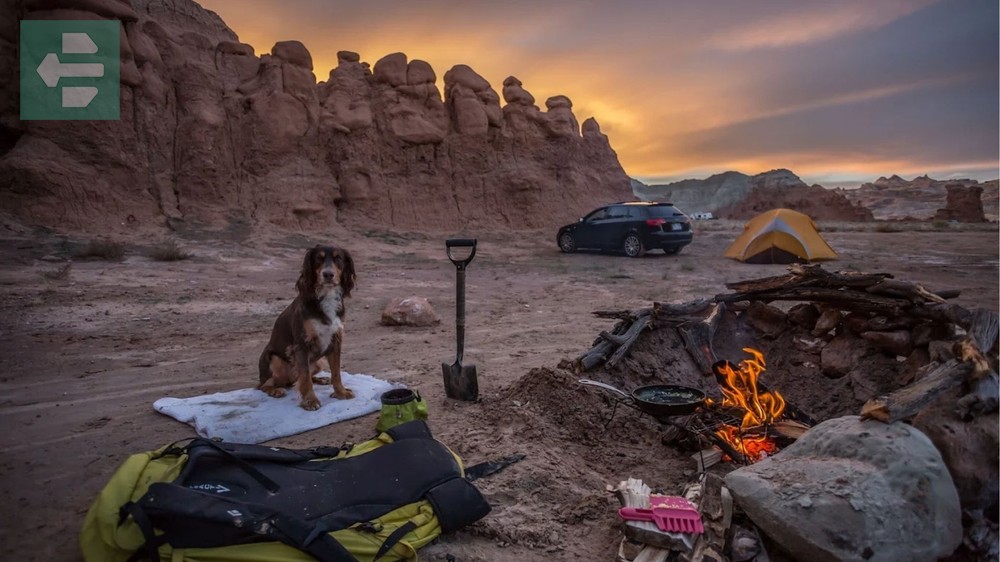
Three yurts provide comfort camping for those wanting amenities without sacrificing the outdoor experience. Each yurt sleeps up to eight people and includes heating, air conditioning, and basic furnishings.
Photography reaches peak conditions during golden hour when low light creates dramatic shadows between the hoodoos. Rangers lead evening programs about the park's geology and the forces that carved these unique formations.
Quick Facts:
- Peak Season: April – October
- Access: Highway 24 to Temple Mountain Road
- Entry Fee: $20 per vehicle
- Suggested Stay: 2-3 nights
- Notable Features: Goblin formations, slot canyons nearby, photography workshops
5. Bear Lake: The Caribbean of the Rockies
Bear Lake's turquoise waters earned it the nickname “Caribbean of the Rockies.” Four campgrounds ring the lake's Utah shoreline, each offering different experiences from shaded cottonwood groves to open beach camping.
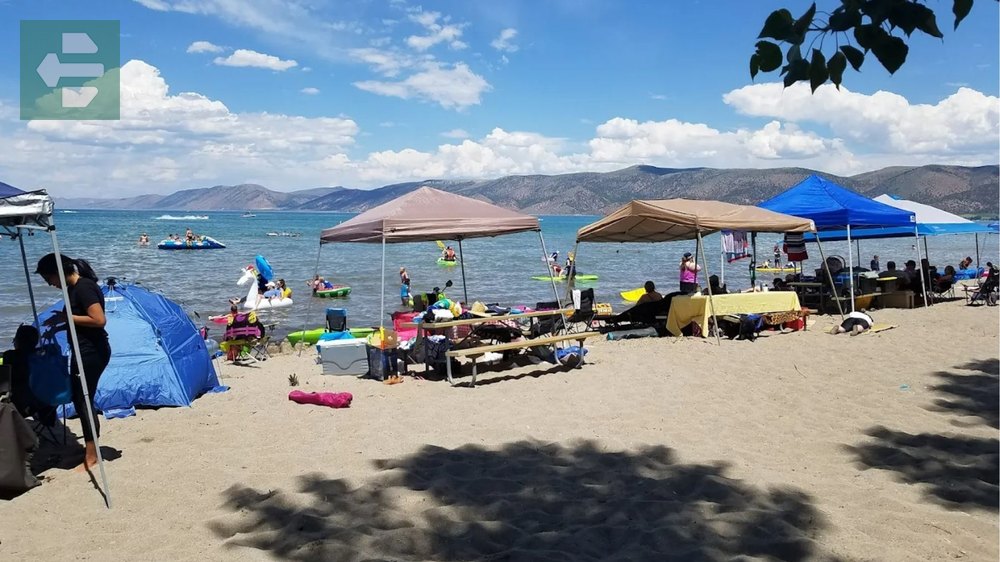
Big Creek Campground provides the most coveted sites, nestled under mature trees with direct lake access. The water stays warm enough for comfortable swimming through September, while fishing produces lake trout, cisco, and the famous Bear Lake whitefish.
Summer thunderstorms create dramatic light shows over the lake. Local tip: position your tent to face east for spectacular sunrise views across the water, when the lake mirrors the surrounding peaks perfectly.
Quick Facts:
- Peak Season: June – September
- Access: Highway 89 north from Logan
- Entry Fee: $15 per vehicle
- Suggested Stay: 3-5 nights
- Notable Features: Turquoise waters, raspberry shakes in nearby towns, water sports
6. Palisade State Park: Golf and Wilderness Combined
Palisade State Park uniquely combines wilderness camping with an eighteen-hole golf course carved into red rock canyons. Four campgrounds accommodate different preferences, from primitive tent sites to full-hookup RV spots.
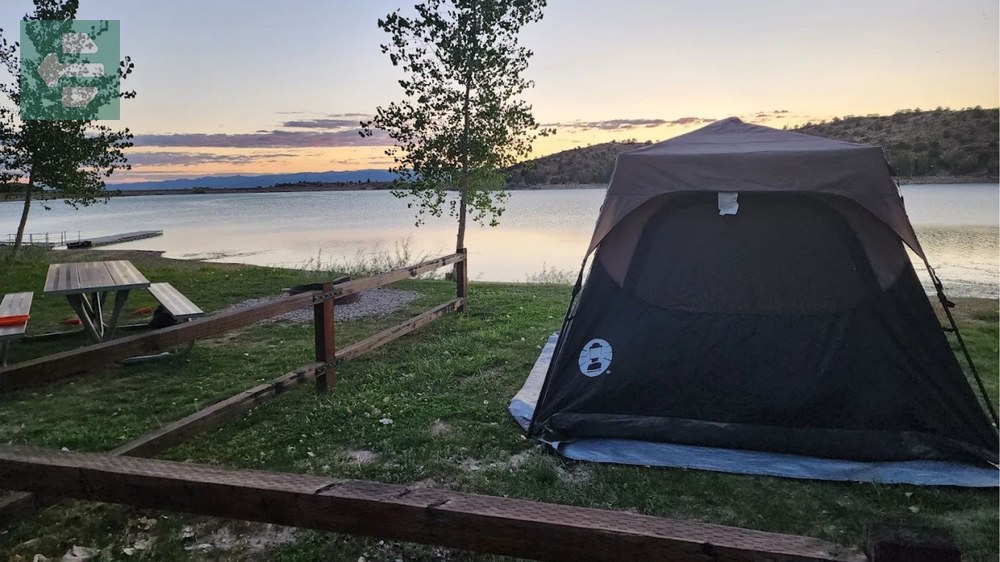
The park's location in Sanpete Valley provides access to off-highway vehicle trails and Sixmile Canyon. After a day exploring dusty trails, the golf course's putting greens provide an unexpected contrast.
Ten cabins offer comfort camping with basic or full amenities. The lake supports fishing for rainbow trout and provides non-motorized boating opportunities in a peaceful setting.
Quick Facts:
- Peak Season: May – October
- Access: Highway 89 to Sterling, follow signs
- Entry Fee: $10 per vehicle
- Suggested Stay: 2-4 nights
- Notable Features: 18-hole golf course, OHV trail access, fishing lake
7. Yuba State Park: Warm Water Paradise
Yuba Lake maintains some of Utah's warmest water temperatures, creating perfect conditions for swimming, waterskiing, and fishing. The Oasis Campground provides the park's most developed camping with shade trees and full amenities.
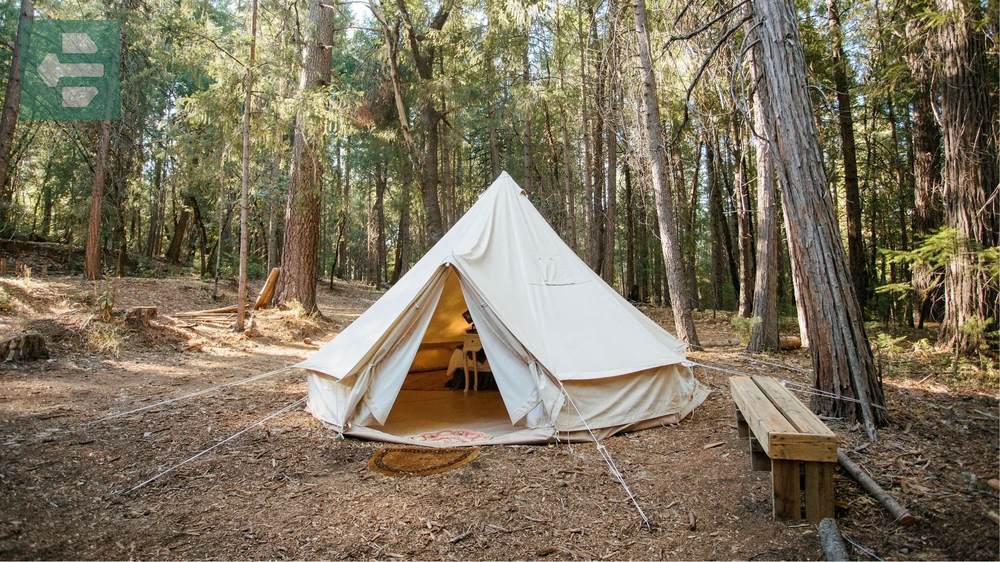
Beach camping at North Beaches offers primitive sites directly on sandy shoreline. Wake to sunrise over the lake, then spend the day lounging on beaches that rival coastal destinations.
The park's four distinct camping areas cater to different styles—from developed sites with hookups to dispersed camping for ultimate solitude. Northern pike fishing peaks in spring and fall when cooler temperatures bring fish to shallow waters.
Quick Facts:
- Peak Season: May – September
- Access: I-15 to Nephi, then Highway 28
- Entry Fee: $15 per vehicle
- Suggested Stay: 3-5 nights
- Notable Features: Warm water, sandy beaches, northern pike fishing
8. Gunlock State Park: Hidden Red Rock Gem
Gunlock State Park occupies a natural bowl along the Santa Clara River, creating an intimate camping experience surrounded by red rock walls. The park's remote location provides solitude while remaining accessible from St. George.
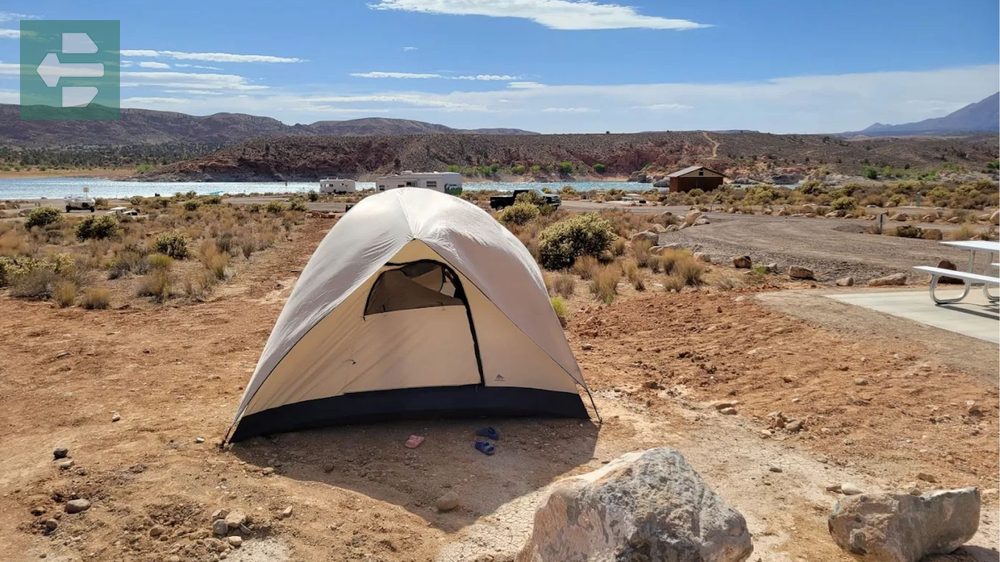
Five primitive campsites overlook Gunlock Reservoir, each positioned for privacy and lake views. The small scale creates a family-friendly atmosphere where children can safely explore and adults can truly unwind.
Night skies here rival any in Utah due to minimal light pollution. The reservoir's calm waters perfect for kayaking and fishing, while red rock formations provide dramatic backdrops for photography.
Quick Facts:
- Peak Season: April – November
- Access: Bluff Street north from St. George to Gunlock Road
- Entry Fee: $10 per vehicle
- Suggested Stay: 2-3 nights
- Notable Features: Dark night skies, intimate scale, red rock formations
9. Big Cottonwood Canyon: Metropolitan Wilderness
Big Cottonwood Canyon brings wilderness camping within thirty minutes of Salt Lake City. The Spruces Campground sits at 7,500 feet elevation among towering spruce and aspen trees that create natural air conditioning even in summer.
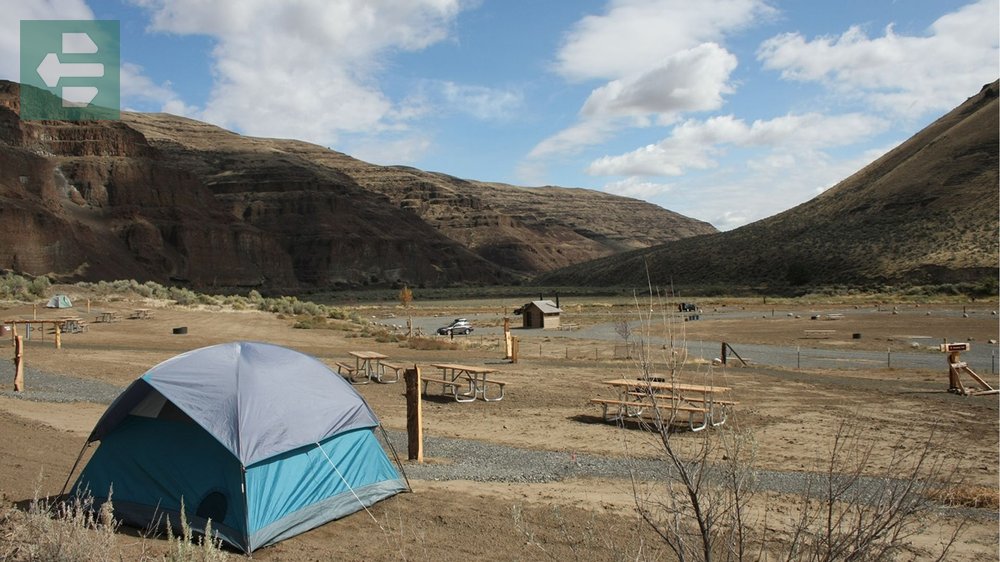
This watershed area maintains strict regulations—no dogs allowed—ensuring pristine conditions. The canyon's granite peaks and alpine lakes provide world-class rock climbing and hiking opportunities.
Fall transforms the canyon into a gallery of gold as aspens reach peak color. The proximity to Salt Lake City makes this perfect for quick escapes when you need nature therapy without long drives.
Quick Facts:
- Peak Season: June – October
- Access: I-215 to 6200 South, then Wasatch Boulevard
- Entry Fee: None (Forest Service)
- Suggested Stay: 2-3 nights
- Notable Features: Watershed protection, rock climbing, aspen groves
10. Albion Basin Campground: Alpine Wonderland
Albion Basin Campground perches at 9,500 feet in Little Cottonwood Canyon, accessible only during summer months when snow melts from the high alpine roads. The twenty-four sites sit among white pines and aspens in a natural amphitheater of granite peaks.
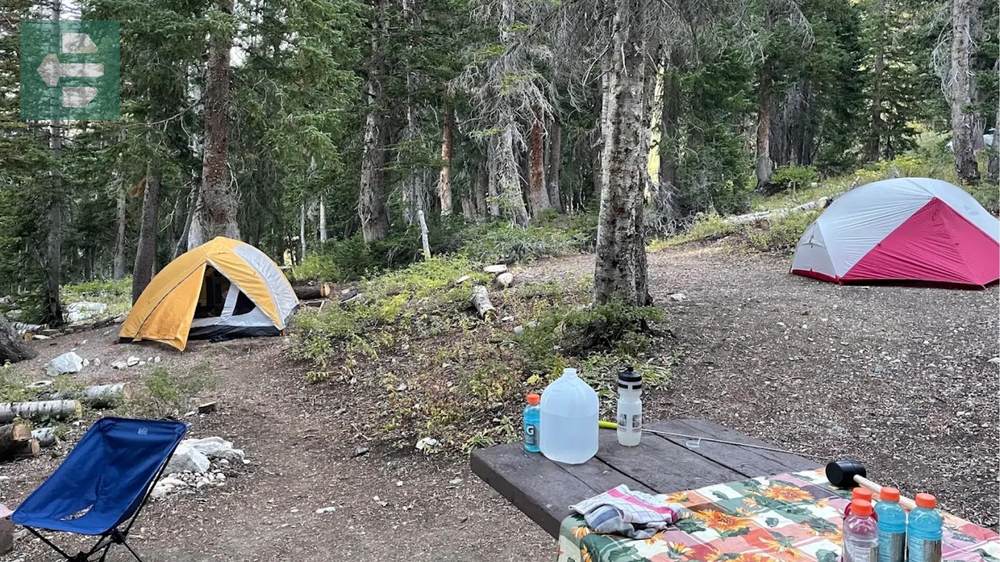
Wildflowers create legendary displays from July through August. The annual Wasatch Wildflower Festival celebrates the basin's botanical diversity with guided walks and photography workshops.
Cecret Lake Trail begins at the campground, leading to an alpine gem surrounded by towering peaks. Weather changes rapidly at this elevation—afternoon thunderstorms arrive with little warning, adding drama to an already spectacular setting.
Quick Facts:
- Peak Season: July – September
- Access: Little Cottonwood Canyon Road to end (gravel final section)
- Entry Fee: $10 per extra vehicle
- Suggested Stay: 2-4 nights
- Notable Features: Wildflower displays, Cecret Lake, high alpine setting
Your Utah Camping Adventure Awaits
The best camping places in Utah offer experiences that linger in memory long after the tent is packed away. These ten locations represent the state's incredible diversity—from red rock canyons to alpine meadows, warm-water lakes to otherworldly formations.
Each campground tells its own story through landscape and experience. Whether you seek the solitude of Gunlock's red rock bowl or the wildflower spectacle of Albion Basin, Utah delivers moments that reconnect you with nature's power.
Pack your gear, choose your adventure, and discover why Utah's camping destinations create lifelong memories. The red rocks and alpine peaks are waiting.
